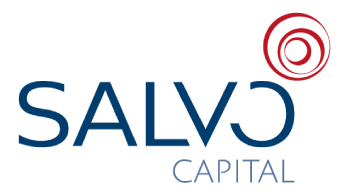Home is where the House is
The average price to buy a house in South Africa right now
South African property tracker ooba has released its latest oobarometer for the third quarter of 2016, showing that property prices have climbed almost 6% year on year.
However, prices have dropped quarter on quarter, declining 3.3% from Q2.
“When adjusting for inflation, house price growth is struggling to show any real year-on-year growth,” the group said.
The Average Purchase Price of First Time Home Buyers in Q3 increased 7.2% year on year, indicating slightly stronger demand fundamentals for property in the First Time Home Buyer market. However the rate of growth in this market is also slowing.
The average purchase prices of homes in South Africa is at R1 119 817, up from R1 057 176 in 2015. For first-time house-buyers, the average purchase price is at R849 249, compared to R792 180 a year ago.
Average deposits have remained fairly stable, with Q3 2016 reflecting an average deposit of 15.4% of purchase price relative to the 15.9% in Q3 of 2015, the group said.
According to ooba, applications from customers requesting 100% bonds declined from 51% in Q3 2015 to 44% in Q3 2016, signalling that home buyers are increasingly aware of the importance of a deposit to secure a home loan.
First-time home buyers remain the most significant contributor to home loan volumes, making up 53% of all ooba’s applications in Q3 2016, up by 1% from Q2 2016’s 52%, and unchanged from Q3 2015’s 53%, it said.
The average interest rate relative to prime on all business concluded by ooba in Q3 2016 was prime plus 0.45%, which is up from prime plus 0.32% in Q3 of 2015.
“This is indicative of increased bank risk and costs of funding,” ooba said.
So, how much will the average house costs for a first-time buyer in South Africa
The gradual deterioration of affordability in the residential property market looks set to continue in 2016, John Loos, household and property sector strategist at FNB Home Loans, said on Tuesday.
The home affordability picture deteriorated further in the fourth quarter of 2015, continuing a gradual deteriorating trend that began back around 2013.
He expects interest rates to gradually increase further and municipalities and utilities to continue their above-inflation tariff and tax increases. In addition, the household debt-service ratio is expected to rise further, driven higher by further interest rate hikes.
“But we are of the belief that not all of the measures of affordability will continue to deteriorate this year,” said Loos.
While he would expect rising interest rates to lift the bond instalment/per capita disposable income ratio higher next year, expected slowing house price growth could possibly end the rising trend in the average house price/per capita disposable income ratio, as we get into the anticipated real house price correction phase. This may also conceivably end the rising price-rent ratio.
According to Loos, house price inflation is far from strong, but has still outpaced slowing per capita disposable income growth in recent times. This has led to further recent deterioration in the average house price/per capita disposable income index as well as the instalment on a 100% bond on the average priced house/per capita disposable income ratios.
The home running cost-related affordability measures also continue their multi-year deterioration. The exception, however, is home maintenance and repairs affordability, which has actually improved since 2008.
Housing continued to become less competitively priced in 2015, out-inflating both consumer goods and services as well as rentals. The interest cost on household debt relative to disposable income also continued to rise in 2015.
This was due to interest rate hiking along with the higher-priced consumer-related forms of household credit still growing faster than the cheaper home loans category.Loos explained that a period of abnormally low interest rates in recent years has kept property still “temporarily” affordable.
This has meant that the loan instalment/per capita disposable income index is actually 5.8% below (more affordable than) the first quarter of 2001 level.
“Whereas the residential market has remained well balanced, translating into average house price inflation of 6.6% year-on-year for the fourth quarter of 2015 – which is still mildly positive in real terms – a deteriorating economy had seen nominal per capita disposable income growth slow to 4.2% by that stage,” said Loos.
Ooba also said on Tuesday that its property statistics for February indicate slower year-on-year house price growth trends emerging.
The average purchase price is up by 4.3% to R1.05 million, while the average purchase price of first-time buyers increased by 4.6% to R801,144.
“At 4.3%, growth in property prices is currently below the inflation rate, which translates to negative growth in real terms. The less buoyant property market correlates with expectations of slower real economic growth and rising interest and inflation rates, which affect both consumer and business confidence,” explained ooba CEO Rhys Dyer.
“The deceleration in property price growth rates can be seen in the month-on-month average purchase price, which is down -0.7%, while the average purchase price for first-time buyers recorded a nominal 0.1% increase.”




